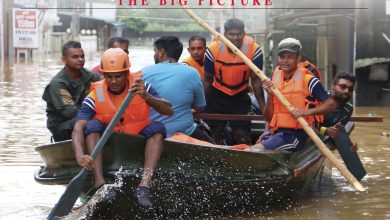SRI LANKAN IDENTITY
THE AGE OF POLARISATION
Sandesh Bartlett emphasises the importance of a common Sri Lankan identity
If President Gotabaya Rajapaksa had hoped to develop a united country following the 16 November 2019 presidential election, what he inherited instead was a polarised nation with supporters of the Sri Lanka Podujana Peramuna (SLPP) as well as the New Democratic Front (NDF) exploiting identity politics to make claims regarding the poll outcome.
Although several attempts were made to foster a sense of pan-Sri Lankan identity, a global trend in majoritarianism has made promoting a modern approach to an inclusive identity challenging. With the internet offering refuge to anyone with an opinion no matter how absurd, people who share particular beliefs are more likely to be connected online, assisted by algorithms.
At its worst, this phenomenon – termed the ‘confirmation bias’ – might easily connect parties who subscribe to extreme views regarding race and religion, and will in turn seem to corroborate and legitimise their views.
Therefore, with the presidential election posited by extreme parties online as a great ‘ethnicity battle,’ it may appear to be a daunting task for the new establishment to promote an all-encompassing Sri Lankan identity.
Attempts have been made in other heterogeneous countries to address issues regarding national identity.
For example, Bosnia and Herzegovina (BiH) deals with a diverse population of Serbs, Croats and Bosniaks. The state uses a theorised multipolar identity system (i.e. one that enables citizens to retain and take pride in the identity of their various communities – whether ethnic, linguistic or regional) while providing their identity as citizens of the State of Bosnia and Herzegovina the foremost place.
While Sri Lanka need not trouble itself with a complicated process such as its tripartite presidential system to address the issue of identity, BiH proves that our case isn’t unique or as extreme. Similar to Sri Lanka, BiH continues to deal with a history of past war while being ensnared in a complicated history connected to the Cold War and former Yugoslavia.
If the situation isn’t unique, what solutions can the government take?
The answer admittedly, is as obvious as it’s unexciting.
Firstly, the state needs to review the education system and enforce laws prohibiting the spread of misinformation. Medium and religion based schools in the country are often at extremes, facilitating student bodies that consist solely of schoolchildren from a single ethnic and linguistic background.
While missionary schools might be exempt from this (as they comprise more diverse and unsegregated student bodies), state schools and other private language based or religious schools enable a continuous production of a carbon copy of what can be seen online: an underexposed student body that is not familiar with other communities and whose beliefs about identity are a continuous victim to the confirmation bias.
Secondly, the state must take firm action against misleading media that espouses division.
The presidential election saw misinformation campaigns launched from all sides of the political spectrum regarding topics such as separatism, terrorism and citizenship. It is little wonder then why social media bursts at the seams with bodies of largely homogenous youth dictating who is a patriot, racist and terrorist – each argument presented online by these self-declared academics was thinly veiled with misleading facts all corroborated within peer groups.
While a revised education system and policies targeting the spread of misinformation could prove to be effective in both the long and short terms, it is equally paramount that the authorities complement these steps with a robust strategy comprising legislation, awareness raising and participation.
If legislation that enshrines the right to be protected from radicalism as a fundamental right is in fact enforced, it’s quite likely that Sri Lankan society could recover from division. However, this would require the active participation of the judiciary and law enforcement officers, with simultaneous awareness building and participation across a myriad platforms in Sri Lankan society.
Programmes such as the previous regime’s ‘Ahanna’ – which addressed topics regarding postwar reconciliation and peacebuilding in Sri Lanka, with both adults and school children across the island – should serve as an example of the sort of platforms that the next government could employ in its awareness raising initiatives for harmony.
While Sri Lanka’s unique position is often posited as the same reason for its ineffectiveness in eradicating division, it’s not the only country in the world to do so – and it is about time that its past is no longer used as an excuse.
Efforts to create a Sri Lankan identity must begin by removing factors that promote any other in the education system and on media platforms, with a comprehensive legal framework that is enforced and complemented by participatory awareness raising programmes for ethno-religious accord islandwide.
Without such measures in place, any grand sweeping gestures of unity for the sake of appearance will be to no avail.






